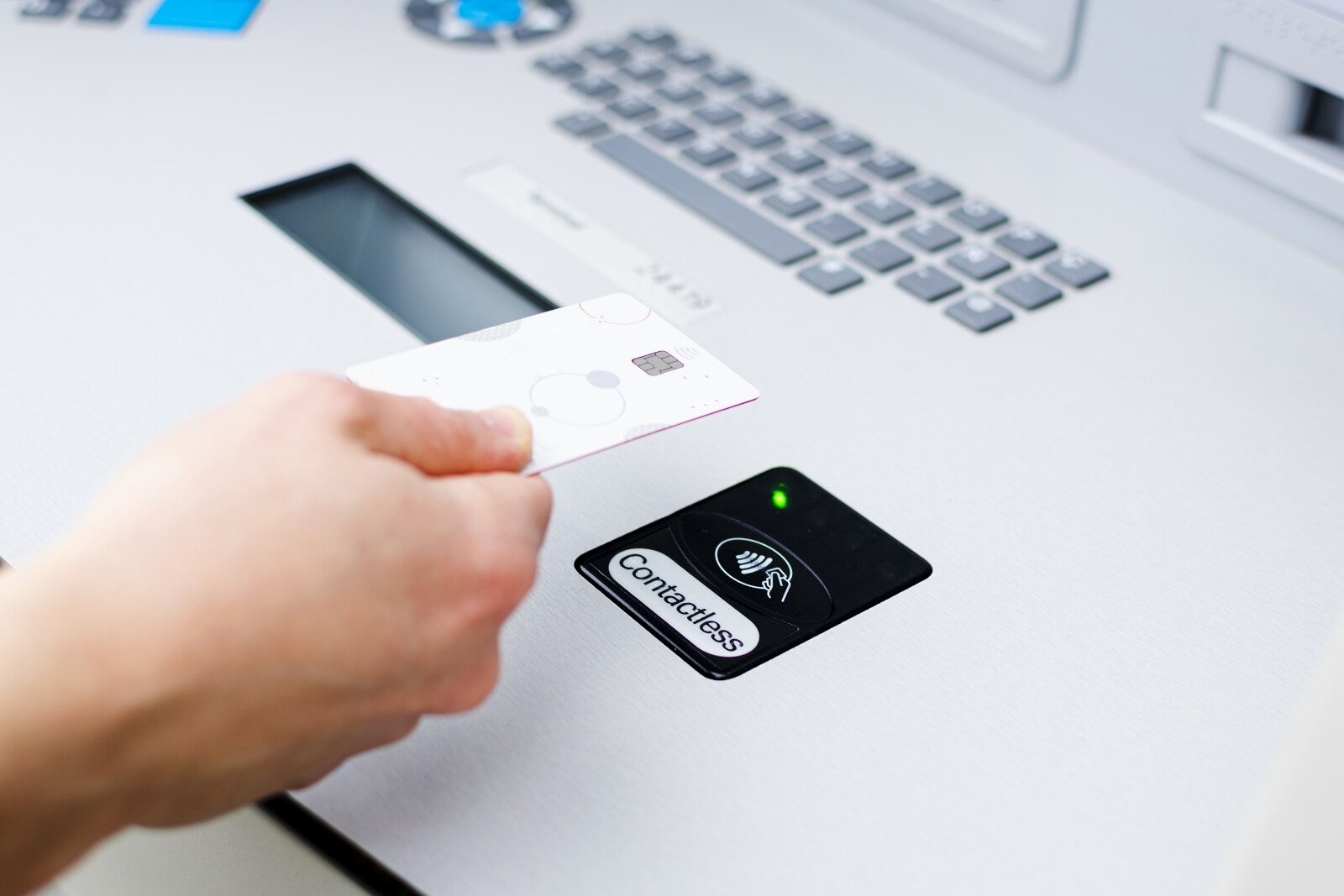The Future of Credit Card Skimming and Emerging Technologies to Combat it
In the current digital age, financial transactions have largely shifted to online platforms, bringing about a significant increase in the incidence of credit card fraud. This article explores the concept of skimming and scamming, two prevalent forms of digital financial fraud.

It delves into the intricacies of how these frauds are conducted, common signs of fraudulent transactions, and ways to secure financial information. The article further underscores the role of financial institutions in combating these frauds and the importance of implementing robust passwords and security measures.
It aims to equip readers with essential knowledge and practices to navigate the digital financial landscape safely. Furthermore, it offers insights into future trends in digital security, thereby enabling individuals to stay abreast of emerging threats in this domain.
In an era marked by digital convenience, understanding and mitigating the risks associated with online financial transactions is a necessity.
Key Takeaways
- The landscape of digital fraud is constantly evolving, and there is an increase in credit card fraud due to the shift towards online transactions.
- It is crucial to be aware of common scams and phishing techniques in order to protect oneself from fraud.
- Skimming, which involves stealing personal information during transactions, is a significant threat, especially at ATMs, gas stations, and restaurants.
- Safeguarding financial information requires a comprehensive approach, including monitoring accounts, using secure software, and practicing safe online behaviors.
The Landscape of Digital Fraud
The ever-evolving landscape of digital fraud presents a formidable challenge, as it continuously morphs, exploiting new vulnerabilities and leaving a trail of victims grappling with financial disruption and emotional distress. The advent of technology and the rise of online financial transactions have opened up new avenues for fraudsters to exploit with alarming efficiency. Cybersecurity legislation, while an essential tool in the fight against digital fraud, often struggles to keep pace with the rapid evolution of cyber threats, creating a continuous cycle of catch-up that leaves consumers at risk.
Social engineering threats, a subset of digital fraud, further complicate the situation. These attacks manipulate individuals into divulging sensitive information, often bypassing technological security measures altogether. Cybercriminals are becoming increasingly adept at exploiting human vulnerabilities, making social engineering threats a significant concern.
A key challenge in the fight against digital fraud is the pervasive lack of awareness and education among consumers. Many individuals remain unknowingly exposed to fraudulent activities due to a lack of understanding of the digital landscape and its inherent risks. Moreover, many do not comprehend the crucial role they play in maintaining their own digital security, often leaving themselves vulnerable to scams and skimming.
Addressing the issue of digital fraud, therefore, necessitates a multi-faceted approach. It requires not only robust cybersecurity legislation but also a concerted effort to enhance consumer awareness and education. This, combined with the development of more sophisticated technological defenses, may help to turn the tide in the fight against digital fraud.
Identifying Common Scams
Understanding common scams requires knowledge of their key characteristics, which often include manipulative tactics and false promises. These scams often exploit the psychology of individuals, capitalizing on their vulnerability and naivety. Scam psychology is, therefore, a significant element of these fraudulent schemes, relying heavily on the innate human tendencies of trust and desire for quick gains.
A prevalent type of scam in the digital era is phishing. This technique involves fraudulent attempts to obtain sensitive information such as usernames, passwords, and credit card details by disguising as a trustworthy entity in an electronic communication. Phishing techniques are clever and sophisticated, often involving emails that appear to be from reputable sources but are, in fact, malicious in intent.
Identifying such scams necessitates vigilance and a sharp understanding of the red flags. Common signs include unsolicited contact, requests for personal or financial information, too good to be true offers, and grammatical errors or odd phrasing in communications. It is crucial to critically evaluate any unexpected or uninvited contact to avoid falling victim to these scams.
Awareness about these scams and their common characteristics is the first line of defense against digital fraud. Equipped with this knowledge, individuals can better protect their financial and personal information from malicious entities. It is essential to remember that while technology has made life more comfortable, it has also opened the door to new forms of scamming and skimming, making vigilance and education key to security in the digital age.
Understanding the Process of Skimming
In the realm of digital fraud, a frequently encountered tactic is a process known as skimming, a subtle yet insidious method that involves the theft of personal information through seemingly ordinary transactions. Skimming is not limited to a single mode of operation. The versatility of this fraud technique is reflected in the various skimming device types that are used by fraudsters. These devices, often small and inconspicuous, are designed to capture and store data from the magnetic stripe of a credit or debit card.
These skimming devices are most commonly found at ATMs, gas stations, and restaurants, which are considered skimming hotspots due to the high volume of card transactions that take place. At ATMs, skimmers often fit over the card reader, while at gas stations they may be installed inside the pump. In restaurants, unscrupulous waitstaff may use handheld skimmers to copy a customer's card information. Regardless of the location, the goal of skimming is the same: to steal card information without the cardholder's knowledge.
Understanding the process of skimming is crucial in order to safeguard personal financial information. By being aware of skimming device types and potential skimming hotspots, individuals can be more vigilant and proactive in protecting their credit card information. This involves routinely checking credit card statements for any unusual transactions, using ATMs from trusted financial institutions, and paying in cash whenever possible at places known to be high-risk. By taking these preventative measures, the risk of falling victim to skimming can be substantially reduced.
Recognizing Fraudulent Transactions
Recognizing fraudulent transactions is a key skill in maintaining financial security and can often be achieved by observing several telltale signs. This practice involves understanding typical transaction patterns and being aware of fraud indicators. The knowledge of one's financial behavior is crucial, as deviations from the norm often signal fraudulent activities. This includes unusual spending habits, such as large purchases or transactions in unfamiliar locations.
Analyzing transaction patterns is essential to identify anomalies. Regularly reviewing bank statements and credit card transaction history allows for early detection of unauthorized activities. It is recommended that close attention be paid to repetitive small transactions. These might seem insignificant but are a common strategy used by fraudsters, who hope these transactions will go unnoticed.
Fraud indicators are another important aspect of recognizing fraudulent transactions. They can range from unrecognized transactions, sudden increases in transaction frequency, to sudden changes in the type or location of purchases. For instance, multiple charges from the same vendor in a short span of time or purchases made in locations far from the cardholder's usual whereabouts could be red flags.
An understanding of these indicators not only aids in the early detection of fraud but also helps in its prevention. Regular monitoring of accounts, setting up alerts for large transactions, and being cautious about sharing personal information are some measures that can be taken. It is important to remember that swift action upon noticing any fraudulent activity can potentially save significant financial loss. Therefore, increasing one's awareness and vigilance towards recognizing fraudulent transactions is of utmost importance for maintaining financial security.
Protecting Your Financial Information
Safeguarding financial information necessitates a comprehensive approach that includes monitoring accounts, employing secure software, and practicing safe behaviors online. The advent of digital technology has made it easier for fraudsters to access sensitive information, thus making credit monitoring and identity theft protection more important than ever.
Credit monitoring is a critical tool in the fight against financial fraud. This service aids in the early detection of suspicious activities on credit accounts by keeping a close watch on credit reports. Accurate and timely alerts allow the individual to take swift action, thereby preventing further damage. However, it is important to note that while credit monitoring provides an essential line of defense, it does not offer complete protection against all forms of identity theft.
Identity theft encompasses a wide range of criminal activities, from credit card fraud to obtaining medical services under someone else's name. A robust identity theft protection service does not only monitor credit but also scans various databases for unauthorized use of personal information. Such service can provide alerts on changes in postal address, applications for credit under the individual's name, or even criminal records associated with the individual's social security number.
In addition to these services, protecting financial information also involves being vigilant about online behavior. This includes using strong, unique passwords for all accounts, being cautious about sharing personal information, especially in response to unsolicited requests, and ensuring that personal devices are protected with the latest security software. It is this combination of vigilance, secure behaviors, and the use of protective services that can significantly reduce the risk of financial fraud.
Steps to Take If You’re a Victim
Understanding the necessary actions to take when victimized by financial fraud can significantly mitigate its long-term impact. Immediate response and appropriate measures, such as identity restoration and scam reporting, are crucial in the aftermath of such incidents.
When financial fraud occurs, the first step is to contact the financial institution and report the incident. This immediate action prevents further unauthorized transactions. It is equally important to contact credit reporting agencies to place a fraud alert on credit reports. This alert notifies creditors to verify identity before opening any new accounts.
Furthermore, reviewing credit reports can help identify any fraudulent activities not yet detected.
The process of identity restoration is an essential step following financial fraud. It involves correcting personal information with credit reporting agencies and other institutions where fraudulent activities took place. Victims should consider seeking assistance from professionals who specialize in identity restoration. They can guide through the process, ensuring that all necessary steps are taken.
Scam reporting is another critical component in responding to financial fraud. Victims should report the incident to local law enforcement agencies and the Federal Trade Commission. Reporting scams not only aids in the investigation but also helps increase public awareness, thereby preventing similar cases in the future.
It is also worth noting that victims of financial fraud should be aware of their rights. Some laws protect victims and provide recourse for losses. Therefore, it is advisable to consult with a legal professional to understand these rights and any potential claims that may be made.
Navigating through the aftermath of financial fraud may be challenging, but with immediate response, diligent identity restoration, and accurate scam reporting, the process becomes manageable, and the long-term impact can be significantly reduced.
Safe Online Shopping Practices
Having previously examined the necessary steps to take when one falls victim to credit card fraud, the focus will now shift to proactive measures that can be undertaken to ensure safer online shopping practices. The digital age has transformed shopping into an activity that can be done from the comfort of one's home, but it has also given rise to new risks and challenges related to credit card security.
One such advancement is the use of virtual wallets, which provide a more secure method of online payment. Virtual wallets protect credit card information by storing it securely and transmitting it via encrypted, non-reusable codes. However, the safety of virtual wallets largely depends on the user's ability to maintain strong, unique passwords and to regularly monitor their accounts for any unusual activities.
Furthermore, the rise of cryptocurrencies presents both opportunities and risks for online transactions. While these digital currencies can offer enhanced privacy and security features, they are also subject to price volatility and regulatory uncertainties. Moreover, cryptocurrency transactions are usually irreversible, and if a scammer gains access to a user's cryptocurrency wallet, the funds can be lost forever. Therefore, it is essential for users to understand the risks associated with cryptocurrencies and to apply stringent security measures when using them for online shopping.
Several safe online shopping practices can be adopted to mitigate these risks. These include:
- Regularly updating software and devices
- Avoiding public Wi-Fi when making transactions
- Verifying the legitimacy of online retailers before making purchases
By understanding and implementing these practices, one can significantly reduce the risk of credit card fraud and enjoy a safer online shopping experience.
The Role of Banks and Financial Institutions
In the realm of preventing online financial fraud, the role of banks and financial institutions is paramount. They are equipped with sophisticated technologies and procedures to detect and prevent unauthorized transactions. These institutions adhere to stringent banking regulations that oblige them to safeguard customer information and combat illicit activities, thus ensuring the security of online transactions.
Banks utilize advanced fraud detection systems, which are designed to identify unusual activity on a client's account. This technology is powered by intricate algorithms that analyze the customer's spending habits and flag any transactions that deviate from the norm. These institutions also employ two-factor authentication and encryption techniques to enhance the security of online transactions.
However, these technologies and procedures alone may not suffice in the fight against online financial fraud. Customer education is an essential component of this battle. Banks and financial institutions have a responsibility to educate their customers about safe online banking practices, the nature of common scams, and how to identify them. This information is often disseminated through newsletters, email alerts, and educational resources on the banks' websites.
Moreover, banks cooperate with law enforcement agencies and regulatory bodies to enhance their ability to detect and prevent fraud. They share information about emerging threats and collaborate on developing strategies to address them.
The role of banks and financial institutions in preventing online fraud extends beyond merely implementing security measures. It involves active engagement in customer education and cooperation with regulatory bodies, thereby enhancing not only the security of individual transactions but also the overall integrity of the online financial system.
Implementing Strong Passwords and Security Measures
Strong passwords and security measures serve as crucial deterrents to online financial fraud, establishing an initial line of defense against unauthorized access to sensitive financial data. They act as the first shield, operating to prevent intruders from gaining access to personal information and financial transactions. Password management and two-factor authentication are key components of this defense system.
Password management involves creating complex, unique passwords that are difficult for fraudsters to crack. It also includes regularly updating passwords and avoiding the use of easily guessed information such as birthdays or common words. On the other hand, two-factor authentication adds an extra layer of security by requiring not just a password and username, but also something that only the user has on them, such as a piece of information only they should know or have immediately on hand - like a physical token.
This approach reduces the risk of successful fraud even if the password is compromised. The combination of these two strategies amplifies the security of financial transactions and accounts, thereby shrinking the opportunity for skimming and scamming.
However, while these measures significantly mitigate risk, they are not foolproof. Cybercriminals continually devise new strategies to outwit security systems. Hence, constant vigilance, regular updates to security protocols, and continuous education about emerging threats are essential components of effective financial data protection.
Understanding the necessity of strong passwords and security measures is imperative. It puts the power in the hands of the individual to protect their financial assets and personal information, reinforcing the importance of personal responsibility in safeguarding against financial fraud.
Staying Informed: Future Trends in Digital Security
Building upon the crucial area of implementing strong passwords and security measures, the discourse now shifts to the evolving landscape of digital security. An integral part of safeguarding one's credit card from skimming and scamming is keeping abreast with future trends in digital security. As threat actors continually devise ingenious methods to circumvent existing security protocols, there is a pressing need for individuals and organizations alike to stay informed about the latest advancements in digital security.
Two of the most promising trends in this domain are Blockchain Protection and Biometric Verification. Blockchain technology, originally developed for cryptocurrency transactions, offers a new paradigm of security. It furnishes an immutable, decentralized ledger of transactions that is extremely resistant to tampering. Its application extends beyond securing financial transactions to include the protection of personal data, thereby providing a robust shield against credit card scams.
Meanwhile, Biometric Verification, the process of verifying individuals' identities based on their unique physical or behavioural attributes, is poised to redefine security authentication methods. Since these attributes are nearly impossible to replicate, biometric verification significantly reduces the risk of credit card fraud. The technology includes fingerprint scans, facial recognition, and iris scans, among others, and is rapidly becoming a standard security feature on devices and platforms around the world.
As the digital landscape continues its relentless evolution, these emerging technologies promise to fortify defenses against credit card scams. However, the responsibility does not end with the adoption of these technologies. It also rests upon the individuals to stay educated about these advancements and how they can be leveraged for personal security.
It remains imperative, therefore, to continue to explore this evolving terrain of digital security to stay a step ahead of the perpetrators.
Frequently Asked Questions
How can I verify the credibility of a website before providing my card details?
To verify the credibility of a website before providing your card details, there are a few key steps you can take:
1. Scrutinize the website's security certificates. These digital certificates endorse the website's authenticity and provide encryption for data transfer.
2. Look for the presence of phishing indicators. Suspicious pop-ups, misspelled URLs, or requests for personal information should raise alarm bells. These are often signs of a fraudulent website attempting to steal your financial information.
Remaining vigilant and paying attention to these signs is crucial in order to safeguard your financial information.
What are some non-digital scams related to credit card fraud that I should be aware of?
Cardholder vigilance is essential to counter non-digital, offline threats associated with credit card fraud. Such scams often involve capturing card information through skimming devices installed on ATMs or point-of-sale terminals.
Unscrupulous individuals may also resort to dumpster diving to retrieve discarded receipts or bills.
Another common scam is the 'change trick', where fraudsters confuse victims during transactions to pocket extra cash or card details.
Thus, maintaining alertness and protecting personal information is crucial.
Can my credit card information be stolen even if I don’t use it online?
Indeed, even without online usage, credit card information remains vulnerable to theft. Offline transaction threats such as card cloning risks persist in physical environments. Perpetrators often employ devices known as 'skimmers' to illegally capture card data during legitimate transactions. These devices, often discreetly attached to ATMs or point-of-sale terminals, can clone card information, enabling fraudulent transactions.
Therefore, it is imperative to be vigilant during offline transactions to protect against potential credit card fraud.
What are some additional measures I can take to protect my credit card while traveling?
Travel insurance benefits often include protection against credit card fraud, providing a safety net during travels.
Utilizing safe payment methods, such as prepaid travel cards or traveler's checks, can minimize the risk of card information theft.
Further, notifying the bank about travel plans, regularly checking account activity, and using secure network connections for online transactions can enhance credit card security.
It is also advised to keep the card in sight during transactions and to use ATMs inside banks.
Can my credit card company provide additional services to help protect my information?
Yes, credit card companies often provide additional services to safeguard customer information. These include:
- Fraud Alerts Services, which notify users of suspicious activity on their account.
- Card Replacement Policies, which ensure quick replacement of lost or stolen cards.
Having these provisions in place significantly reduces the risk of personal data compromise. Therefore, it's advisable to acquaint oneself with these services and utilize them to ensure maximum protection of one's financial data.
Conclusion
In conclusion, the increasing sophistication of digital fraud necessitates heightened vigilance in safeguarding financial information. Utilizing strong passwords, adopting safe online shopping practices, and understanding the role of banks in this fight against digital fraud are paramount.
Staying informed about future trends in digital security can further equip individuals to mitigate the risks of skimming and scamming. Digital security is not merely an individual concern but a communal responsibility.

This post has been generated by AI and was not reviewed by editors. This is Not legal advice. Please consult with an attorney.




